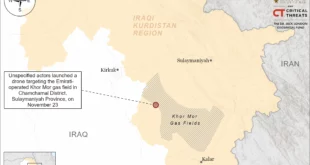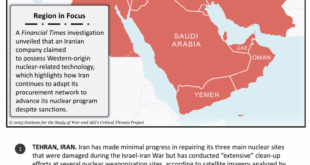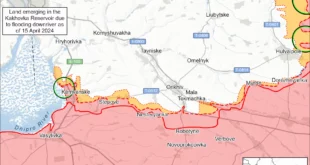The United States was able to quickly confirm the death of the Islamic State’s leader in southern Syria this past October because it had his DNA and other biometric data on file from an encounter with him from long before he took the helm of the terror group.
U.S. officials are still refusing to share the true identity of the man known to most of the world only by his nom-de-guerre, Abu al-Hassan al-Hashimi al-Qurashi.
But a U.S. military official told VOA that Abu al-Hassan was one of the last of the group’s legacy leaders, around since its founding, and that with his death, leadership of IS has passed to a new generation.
“The ideology is non-constraining, so there is a new team of leaders,” the official said on the condition of anonymity in order to discuss the intelligence.
IS’ new leader, Abu al-Hussein al-Husseini al-Qurashi, is “not from the original team,” the official added, warning that the group, despite its weakened state, has maintained its ability to prepare for leadership losses.
“As those [new] leaders are killed, there are people who are trained and ready to come behind them,” the official said.
That ability has been critical to IS’ survival, which has seen its forces whittled down from tens of thousands of fighters during the height of its self-proclaimed caliphate in Iraq and Syria, to as few as 6,000 now.
U.S. and coalition efforts have likewise removed a series of key IS officials from the battlefield through a series of airstrikes and arrests.
Since last February, when a U.S. special forces raid led to the death of IS leader Abu Ibrahim al-Hashimi al-Qurashi, also known as Hajji ‘Abdallah, at least six other senior IS officials have been killed or detained.
Just this past September, U.S. National Counterterrorism Center Director Christine Abizaid described Islamic State as being forced to go into survival mode due to “major talent loss.”
“Given that two ISIS leaders have been killed in less than one year, the organization is at a nadir,” Colin Clarke, director of research at the global intelligence firm The Soufan Group, told VOA, using an acronym for the terror group.
“It remains dangerous, but nowhere near as capable as it was even just two or three years ago,” he added.
The success of the U.S. and its partner forces in targeting and eliminating IS leaders across northern Syria may be one reason Abu al-Hassan took refuge in southern Syria, where the terror group is thought to have just a few hundred fighters.
Still, Abu al-Hassan’s presence in Daraa took many by surprise.
U.S. officials tell VOA the Free Syrian Army contacted them through an intermediary because while its leaders knew they were going after senior IS officials, they were unsure of whom had actually been killed.
And there are some doubts about whether IS will continue to use southern Syria as a refuge.
U.S. officials “haven’t seen a widespread movement” of IS to that part of the country, the senior military official told VOA. “This is perhaps an anomaly.”
U.S. officials also have warned that the core group, weakened as it may be, remains a serious long-term threat. They point to the thousands of IS fighters languishing in prisons across northeastern Syria and to the group’s ability to spread its ideology at displaced persons camps like al-Hol and al-Roj, described by some as a “breeding ground” for the next generation of jihadi fighters.
“ISIS is able to continue to recruit and replace its leaders,” said Myles Caggins, a senior fellow at the Washington-based New Lines Institute and a former spokesperson for the U.S.-led coalition, using another acronym for the terror group.
Caggins told VOA that while the effectiveness of many of the IS leaders “has diminished greatly” since the height of its self-proclaimed caliphate, it has not diminished the overall zeal of the group’s followers.
“We have seen ISIS members in West Africa, as well as in Southwest Asia, pledge allegiance to the new caliphate,” he said. “This is just a sign that the world must continue to pay attention.”
Other analysts echo the concerns.
Islamic State is “not based off of sort of a charismatic leadership model,” Aaron Zelin, a fellow at the Washington Institute for Near East Policy who specializes in jihadism, told VOA.
“It’s based off more of a legalistic leadership model meaning the leader itself doesn’t really matter,” Zelin said. “For them, it’s kind of irrelevant who it is so long as, you know, the central leadership in the Shura Council says that this is the guy and that he has the legitimate credentials, people will follow him.”
Others warn the new leadership should not be underestimated.
“Targeting leadership yields short-term benefits for counterterrorism and essentially manages the threat, but for a group like ISIS [it] will not be enough to end the threat, something the U.S. should have learned after nearly two decades targeting terrorist leaders in Iraq,” Katherine Zimmerman, a fellow at the American Enterprise Institute, told VOA via text.
“Killing off the so-called legacy leaders simply brings to power the next generation, who have learned the lessons of their predecessors and will carry the black flag forward,” she noted.
 Eurasia Press & News
Eurasia Press & News



